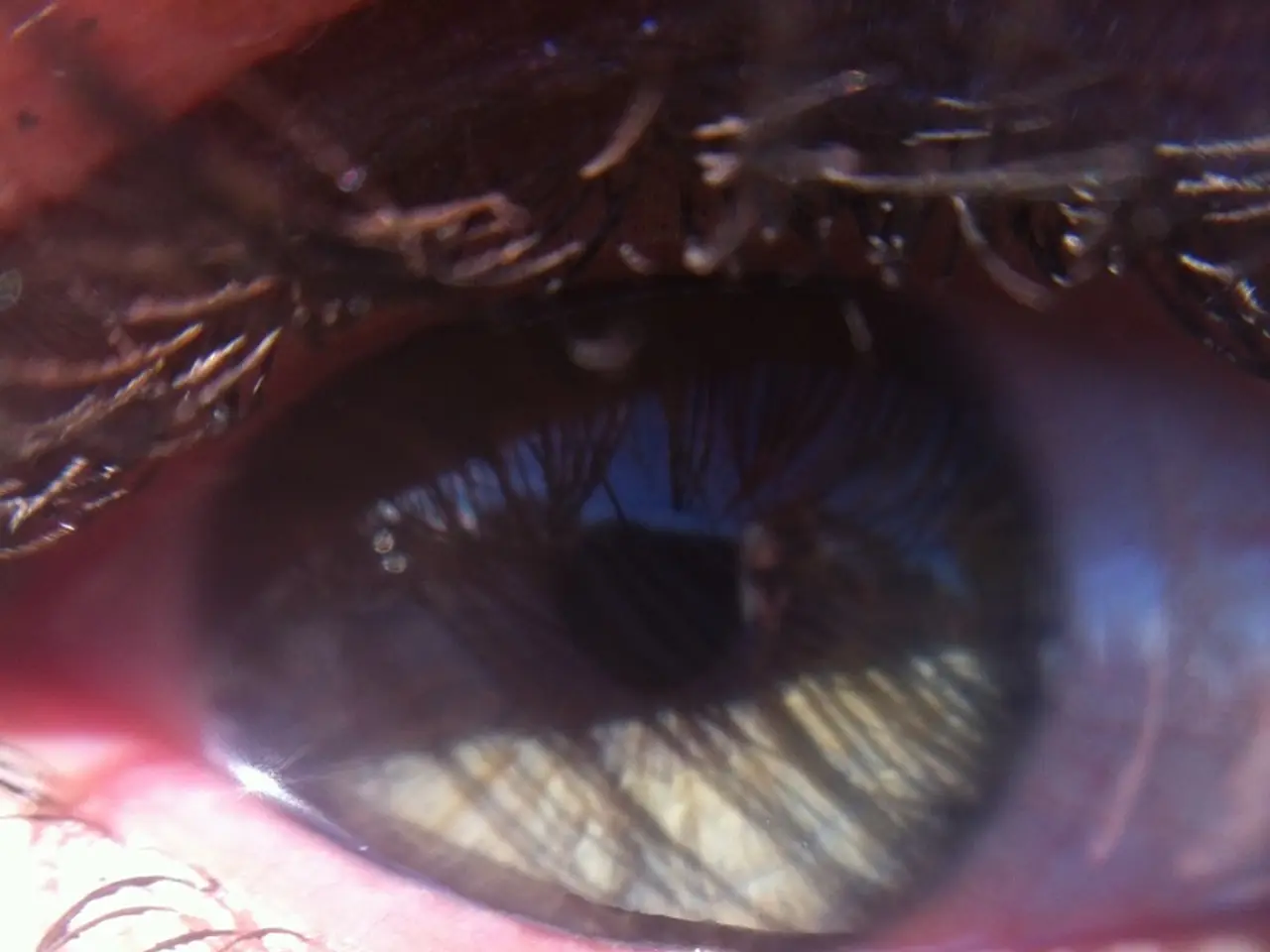Eye Condition: Inadequate Eyelid Closure and Corneal Injury (Keratoconjunctivitis)
Exposure Keratoconjunctivitis (EKC): A Common and Contagious Eye Condition
Exposure Keratoconjunctivitis (EKC) is a common eye condition that affects both the cornea and the conjunctiva, causing inflammation and discomfort. The primary cause of EKC is adenovirus infection, a highly contagious viral agent [2].
Causes and Symptoms
EKC is primarily caused by adenovirus infection, which can spread through direct contact with infected secretions, contaminated surfaces, or via respiratory droplets. Other causes, although less common, include environmental irritants such as smoke, chemicals, and other irritants [1].
Typical symptoms of EKC include redness and swelling of the conjunctiva, watery discharge, grittiness or foreign body sensation, and, in some cases, corneal involvement leading to vision issues.
Treatment and Prevention
Since viral infections do not respond to antibiotics, the mainstay of EKC treatment is supportive care. This includes the use of artificial tears to reduce irritation, cold compresses to relieve discomfort, and good hygiene practices to prevent the spread of the virus (such as handwashing and avoiding touching the eyes).
Topical corticosteroids may be cautiously used by ophthalmologists in severe cases to reduce inflammation, but their use is not routinely recommended due to the risk of complications. No specific antiviral treatment is widely available, and management focuses on symptom control and preventing transmission. Antibiotics are generally not used unless secondary bacterial infection is suspected.
Preventative measures for EKC include modifying the environment, regular eye exams, surgical prevention at early stages of lagophthalmos, maintaining proper hygiene, and monitoring high-risk populations.
Complications and Risk Factors
EKC is highly contagious and frequently occurs in outbreaks. It can cause significant discomfort and sometimes temporary vision impairment but typically resolves without permanent damage. Recurring EKC can disrupt the healing process of the eye, increasing the risk of bacterial or viral infections.
Conditions that make the eyes more vulnerable to EKC include facial paralysis, tumors that push the eyeball forward, and about half of ICU patients given muscle relaxants or placed under deep sedation.
In summary, EKC is a common and contagious eye condition primarily caused by adenovirus infection. Treatment mainly involves supportive measures with symptom management and infection control rather than direct antiviral therapy. Preventative measures are crucial in managing this condition.
- Proper hygiene practices, such as handwashing and avoiding touching the eyes, are essential in preventing the spread of Exposure Keratoconjunctivitis (EKC).
- Regular eye exams can help monitor high-risk populations and prevent complications associated with EKC.
- In terms of health and wellness, maintaining good fitness and exercise routines, coupled with adequate skin care and proper nutrition, can strengthen overall immune system function, potentially reducing the risk of contracting EKC.
- Mental health and stress management play a role in overall wellbeing, and lower stress levels are associated with stronger immune response, thus indirectly aiding in preventing eye conditions like EKC.
- Supportive care, including the use of artificial tears and cold compresses, helps manage the symptoms of Exposure Keratoconjunctivitis (EKC), while the medical community continues to research for its specific antiviral treatment.







